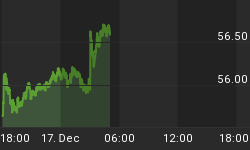Investor sentiment hit a bullish extreme when the Federal Reserve announced QE3 7 weeks ago. Oops! Since then the equity market has done nothing but rollover and as expected, so has investor sentiment. Investors usually sour on the markets when prices head lower. Investor sentiment is cyclical as bearish extremes (bull signals) will follow bullish extremes (bear signals) and so on. The markets are headed towards extremes in bearish sentiment, which means we should expect lower prices. It would be nice to see investor sentiment turn really bearish before stocks bottom and pivot higher. This should be several weeks away. Anything short of this will lead to a sub-optimal bounce. As investors are finding out after each QE, a market that fails to clear itself of the weak hands is a market built upon a poor foundation. So if you want to be a bull, you should pray for lower prices and bearish extremes.
The "Dumb Money" indicator (see figure 1) looks for extremes in the data from 4 different groups of investors who historically have been wrong on the market: 1) Investors Intelligence; 2) MarketVane; 3) American Association of Individual Investors; and 4) the put call ratio. This indicator is neutral, and just below the extremely bullish level. Bullish sentiment is unwinding.
Figure 1. "Dumb Money"/ weekly
Figure 2 is a weekly chart of the SP500 with the InsiderScore "entire market" value in the lower panel. From the InsiderScore weekly report: "Insider trading volume is seasonally light across the market as most companies have closed trading windows, effectively prohibiting insiders from buying or selling until after the release of Q3'12 earnings. Transactional volume, however, will begin to increase over the next few days as earnings season hits its stride. This past week, sellers outnumbered buyers by a 7:4 margin market-wide and the top-line sectors showed Neutral sentiment readings."
Figure 2. InsiderScore "Entire Market" value/ weekly
Figure 3 is a weekly chart of the SP500. The indicator in the lower panel measures all the assets in the Rydex bullish oriented equity funds divided by the sum of assets in the bullish oriented equity funds plus the assets in the bearish oriented equity funds. When the indicator is green, the value is low and there is fear in the market; this is where market bottoms are forged. When the indicator is red, there is complacency in the market. There are too many bulls and this is when market advances stall. Currently, the value of the indicator is 69.83%. Values less than 50% are associated with market bottoms. Values greater than 58% are associated with market tops. It should be noted that the market topped out in 2011 with this indicator between 70% and 72%.
Figure 3. Rydex Total Bull v. Total Bear/ weekly
TheTechnicalTake offers a FREE e-newsletter: HERE
Visit TheTechnicalTake website: HERE















